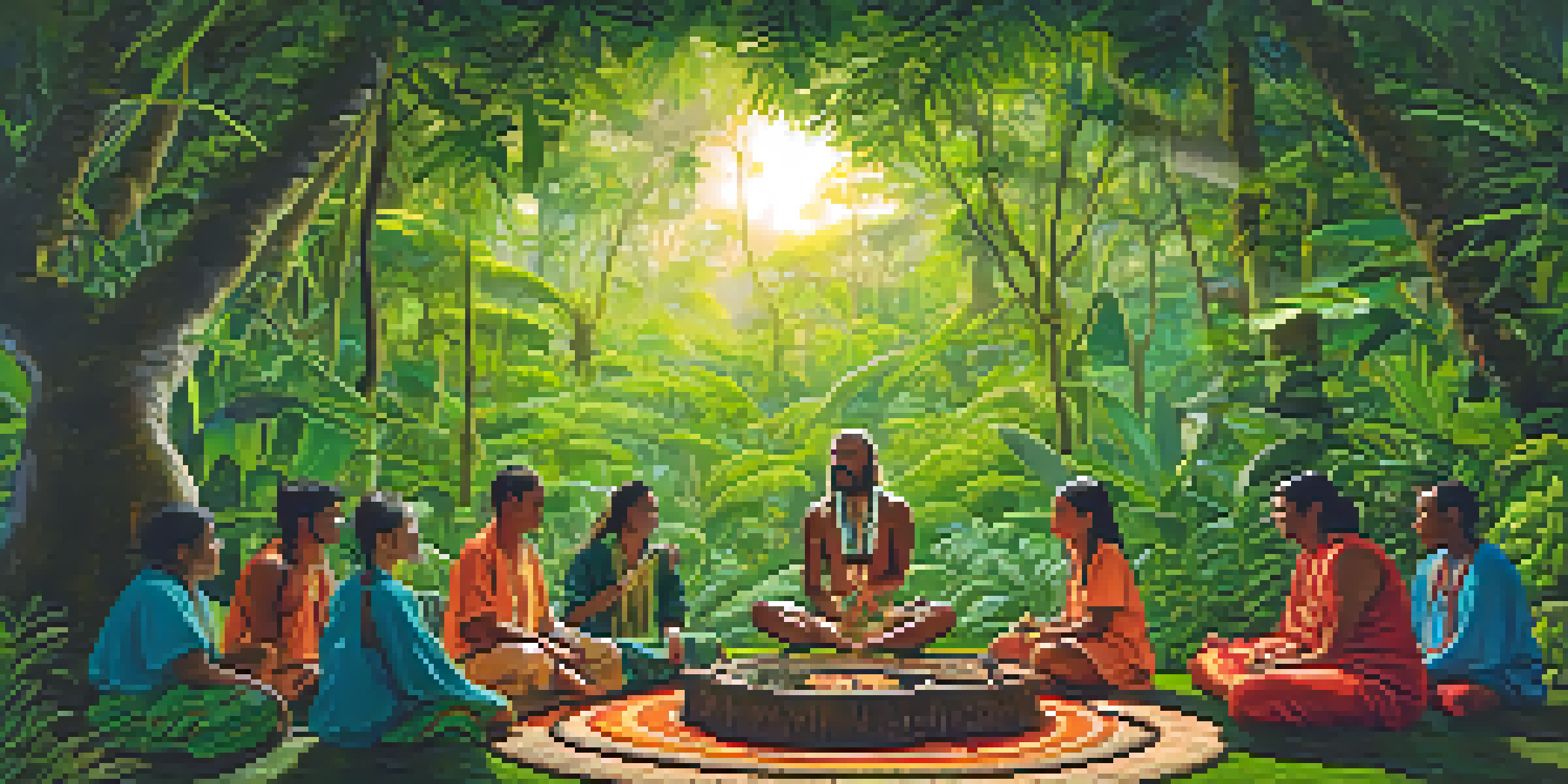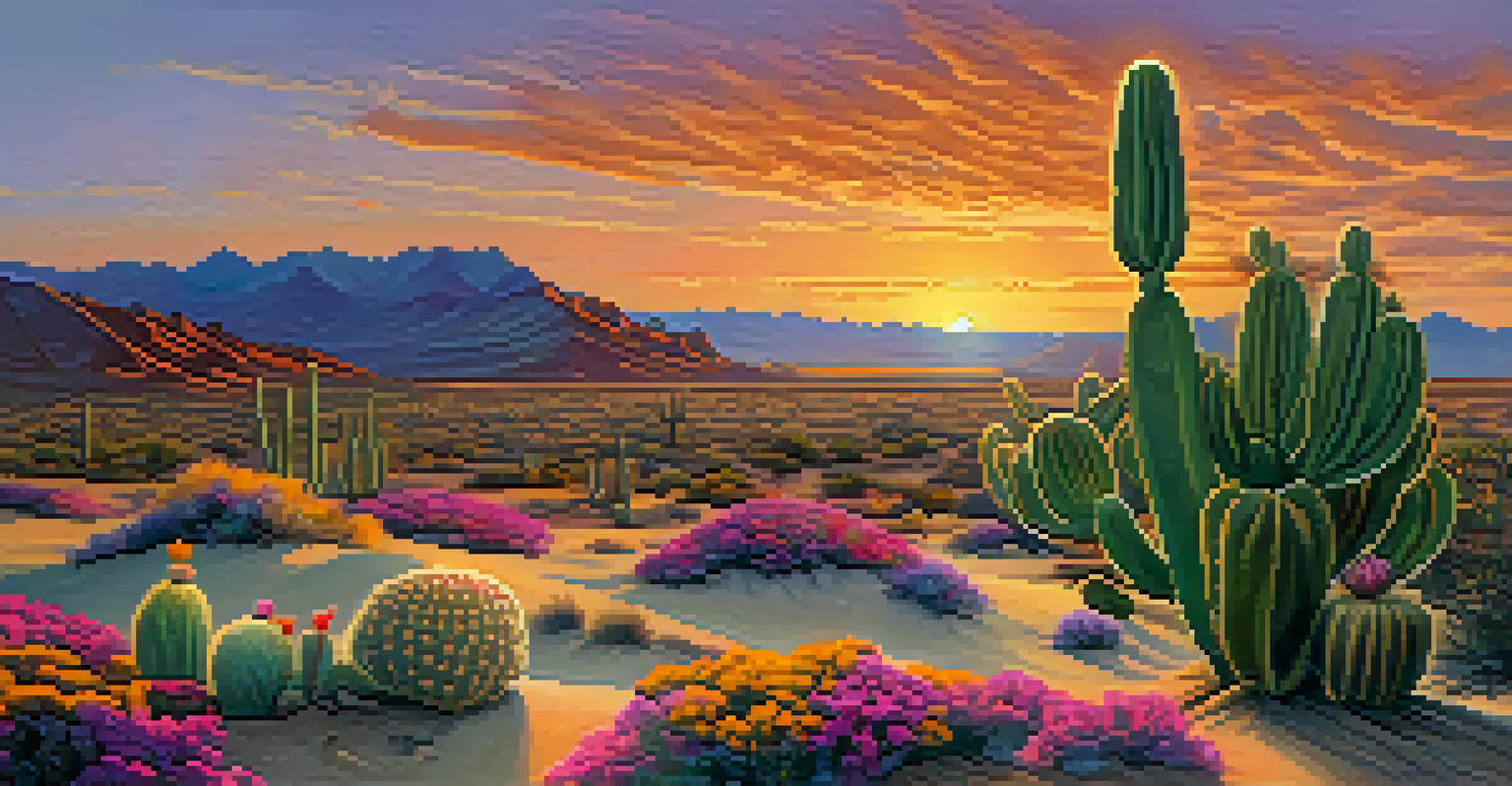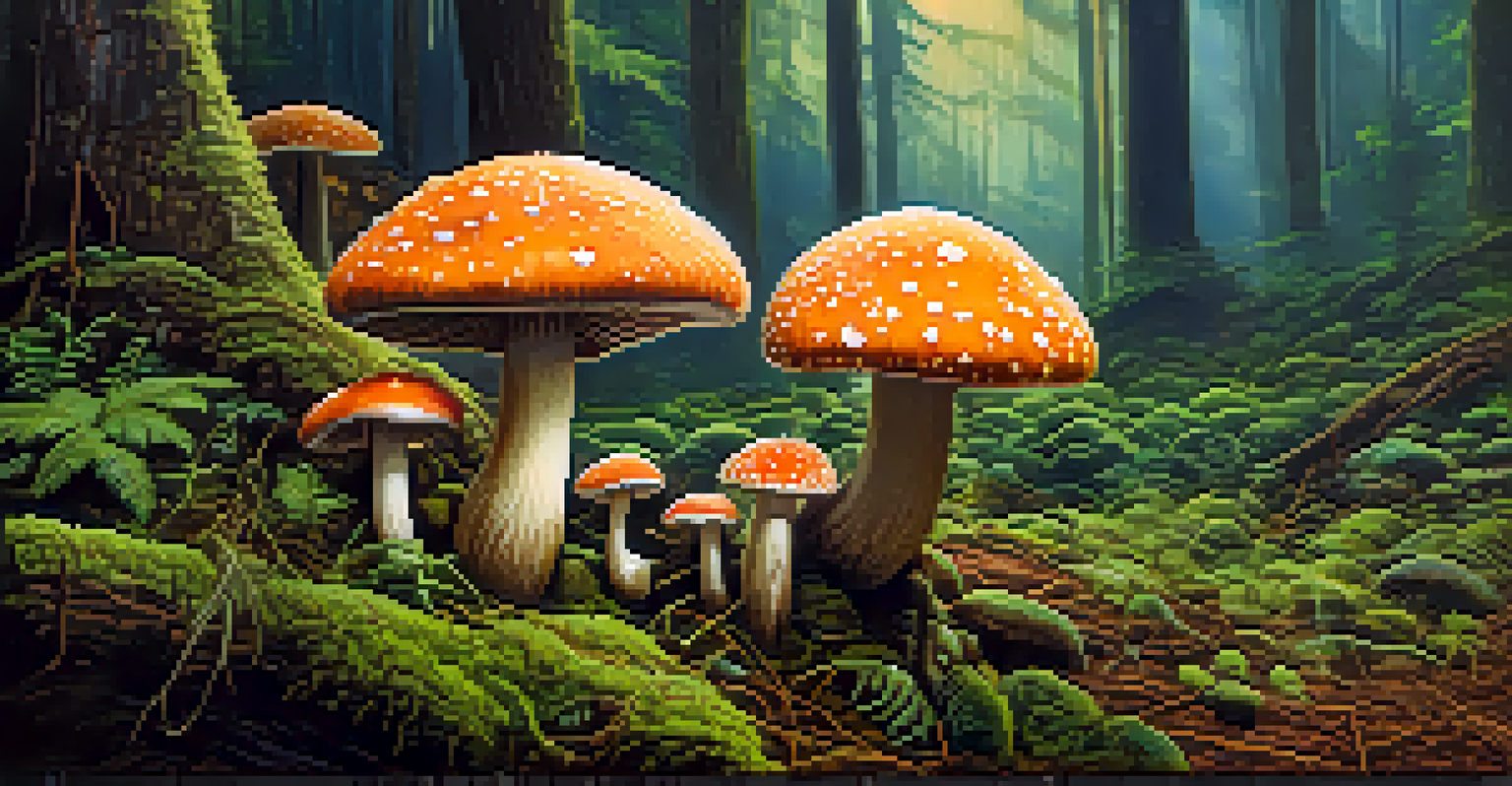Entheogens in Indigenous Cultures: Tradition and Legacy

Understanding Entheogens: A Brief Overview
Entheogens are substances used in religious, spiritual, or shamanic contexts to induce altered states of consciousness. Derived from the Greek words 'entheos' (meaning 'divine within') and 'genes' (meaning 'generated by'), these substances have been integral to numerous indigenous cultures around the globe. They are often used in rituals to facilitate connection with the spiritual realm, promote healing, or gain insight into the human experience.
The use of entheogens in ritual settings can create a profound sense of community and shared experience.
While many people may associate entheogens with recreational drug use, their historical and cultural significance is profound. For indigenous communities, these substances are not mere tools for escapism; they serve as gateways to deeper understanding and communal bonding. This rich tapestry of tradition highlights the importance of context and intention in the use of entheogens.
Examples of entheogens include peyote, psilocybin mushrooms, and ayahuasca, each with its own unique cultural significance. For instance, peyote has been used for centuries by Native American tribes in healing ceremonies, underscoring the deep-rooted connection between nature and spirituality.
The Role of Entheogens in Indigenous Spiritual Practices
Indigenous peoples have long utilized entheogens as sacred tools within their spiritual practices. These substances often play a central role in rituals designed to connect participants with their ancestors, nature, and the universe. In many cases, these practices are accompanied by music, dance, and other forms of artistic expression, creating a holistic experience that enhances the effects of the entheogen.

For example, in the Amazon rainforest, the brew ayahuasca is consumed during ceremonies led by shamans. Participants often report profound insights and healing experiences that transform their understanding of themselves and their place in the world. This reflects a deeply ingrained belief that such substances can facilitate communication with the divine and foster personal growth.
Entheogens' Spiritual Role
Entheogens are used in indigenous cultures as sacred tools to enhance spiritual connection and personal transformation.
Moreover, these ceremonies are often communal, emphasizing a shared experience that strengthens social bonds within the community. This collective aspect not only enriches the individual’s journey but also reinforces cultural identity and continuity.
Cultural Significance of Specific Entheogens
Different indigenous cultures have developed unique relationships with specific entheogens, often rooted in their local environment and traditions. For instance, the use of peyote in Native American Church ceremonies illustrates how a particular plant can embody spiritual significance and cultural identity. The ritualistic consumption of peyote is not just about the substance itself, but the entire experience surrounding it.
Respect for indigenous cultures must be a priority when engaging with their traditional practices and beliefs.
Similarly, the use of psilocybin mushrooms among the Mazatec people of Mexico showcases how local flora can be woven into the fabric of spiritual practice. In their rituals, mushrooms are seen as a means to communicate with the divine, often leading to visions and insights that guide personal and communal decision-making.
This cultural significance extends beyond individual communities; as these practices are shared, they can influence broader spiritual movements, illustrating the interconnectedness of indigenous traditions across regions.
Historical Context of Entheogen Use in Indigenous Cultures
The historical use of entheogens among indigenous cultures spans thousands of years, with archaeological evidence indicating their presence in ancient rituals. From the cave paintings in Spain depicting psychedelic experiences to the ceremonial artifacts found in Mesoamerica, it's clear that these substances have played a significant role in human history.
These ancient practices highlight the continuity of tradition, as many indigenous groups maintain their ancestral rituals involving entheogens to this day. This historical context not only enriches our understanding of these substances but also emphasizes the importance of preserving these cultural practices for future generations.
Cultural Significance of Plants
Different indigenous cultures have unique relationships with specific entheogens, reflecting their spiritual beliefs and traditions.
Furthermore, as modern society begins to explore the therapeutic potentials of entheogens, it is crucial to recognize and respect their origins. Engaging with these substances in a culturally respectful manner can help bridge the gap between traditional practices and contemporary therapeutic applications.
Contemporary Relevance and Resurgence of Entheogenic Practices
In recent years, there has been a resurgence of interest in entheogens, particularly as people seek alternative methods for healing and personal development. This renewed fascination has led to a growing movement that acknowledges the traditional uses of these substances while also exploring their potential benefits in modern contexts, such as mental health treatment.
However, this contemporary interest raises important questions about cultural appropriation and the ethical use of entheogens. It’s essential to approach these practices with sensitivity, ensuring that the voices of indigenous communities are heard and respected. Engaging with these substances should not come at the expense of the cultural heritage from which they originate.
Ultimately, the resurgence of entheogenic practices invites us to reflect on our own relationship with nature, spirituality, and community. By honoring the traditions of indigenous cultures, we can foster a deeper connection to the world around us.
Challenges Faced by Indigenous Cultures in Preservation of Practices
Despite the rich traditions surrounding entheogens, many indigenous cultures face significant challenges in preserving their practices. Factors such as colonialism, globalization, and environmental degradation have put immense pressure on these communities, threatening their cultural heritage and access to traditional knowledge. As a result, many practices surrounding entheogens are at risk of disappearing.
Moreover, the commercialization of entheogens by outsiders can further complicate the situation. As more people seek out psychedelic experiences without understanding their cultural context, the authenticity of these practices can be undermined. This commercialization often strips away the spiritual significance and communal aspect that are vital to indigenous traditions.
Challenges to Indigenous Practices
Indigenous cultures face significant challenges in preserving entheogenic practices due to external pressures like globalization and commercialization.
To combat these challenges, indigenous communities are increasingly taking steps to reclaim their cultural heritage. This involves advocating for their rights, documenting traditional practices, and educating others about the importance of respectful engagement with entheogens.
The Future of Entheogens in Indigenous Cultures
Looking ahead, the future of entheogens in indigenous cultures will likely be shaped by a combination of resilience and adaptation. As awareness of the therapeutic potential of these substances grows, indigenous communities may find new opportunities to share their knowledge and practices in a way that honors their heritage while also contributing to broader conversations about mental health and spirituality.
Collaboration between indigenous leaders and researchers can create pathways for respectful engagement that benefits both parties. By prioritizing the voices of indigenous peoples, we can foster an environment where traditional practices are validated and respected, rather than appropriated or exploited.

Ultimately, the legacy of entheogens in indigenous cultures is a testament to the enduring power of tradition and the human quest for connection. As we navigate the complexities of modern life, these ancient practices offer valuable insights into the relationship between nature, spirituality, and community.